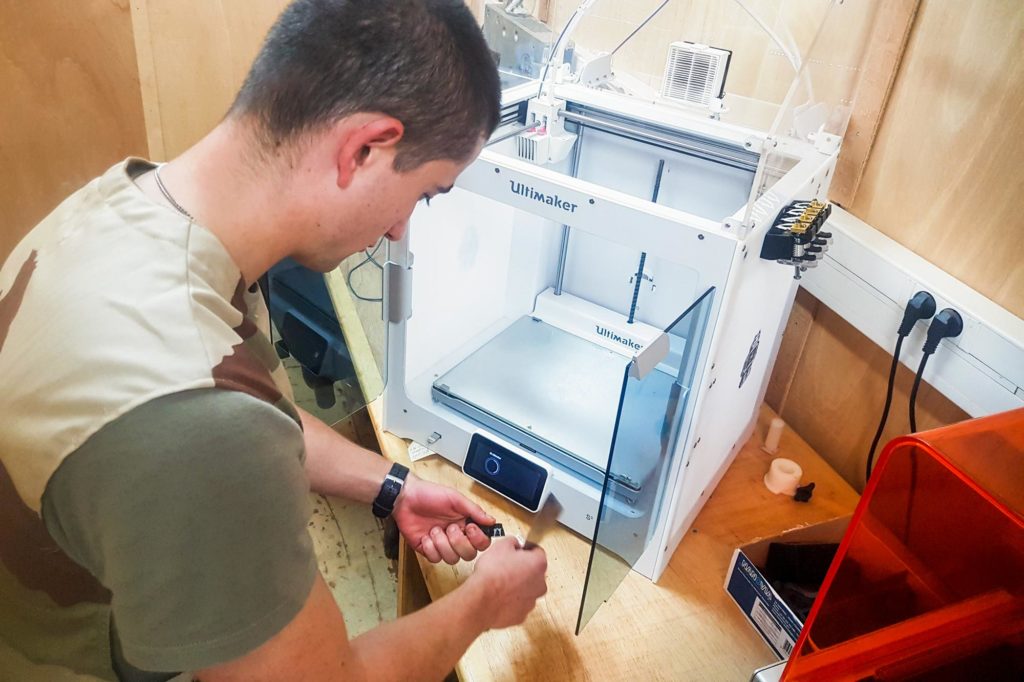French soldiers deployed to Operation Barkhane in the Sahel have been experimenting for several months with 3D printers to make spare parts at their base in Mali.
According to a Ministry of the Armed Forces release, Desert Tactical Group – Logistics “Charentes” is responsible for testing the feasibility of using the two 3D printers at the large base in Gao to make components.
In general, the specialists at the base a tasked to produce replacements for broken components.
They follow a familiar process – first modelling the part on a computer and then printing, testing, iterating and refining where necessary.
Small parts can be printed in minutes and more complex projects within hours, saving time and effort in transporting equipment to the relatively remote base in central Mali.
“It’s a great tool, able to solve problems quickly,” Quartermaster Quentin (the French military only uses first names for soldiers on active service) explained.
“If we take the example of an ignition button for a P4 vehicle, it is obvious. Instead of having to order a part, immobilize the vehicle for several days and change a entire power system, I make a replica with the 3D printer in a few minutes, the part is changed and the vehicle is back up and running.”
Using the two 3D printers, soldiers have been able to manufacture and test and have approved components including protective shells, seals, and parts for optics.
The 4,500-strong Operation Barkhane force has mandate for counter-terrorism operations across Africa’s troubled Sahel region, focusing activity in insurgent-hit Mali, Burkina Faso, and Niger. The force currently includes personnel from Estonia and helicopters from the United Kingdom.
Militaries around the world have been experimenting with additive manufacturing to make parts and complex systems for some time.
Just like the French, the U.S. Marine Corps sent 3D printers to Afghanistan in 2017 in a bid to speed up the parts supply chain.
In 2015, a 3D printed drone was launched from the Royal Navy warship HMS Mersey.
Last October, the first 3D printed metal part for use at sea was approved for testing by the U.S. Navy, and in December, the U.S. Marine Corps printed a concrete footbridge.
And in perhaps the most notorious example, the U.S. Army revealed in 2017 that it had 3D printed the vast majority of parts for the backronymtastic RAMBO – Rapid Additively Manufactured Ballistics Ordnance – a modified M203 grenade launcher.



